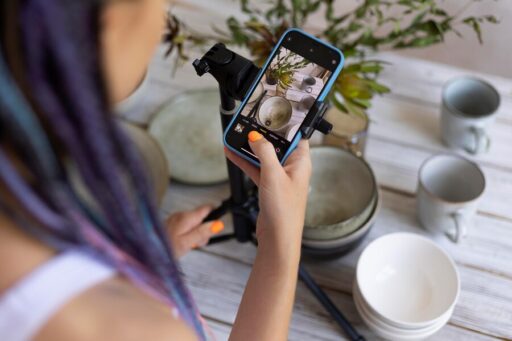Using stock photography can be a game-changer for your projects, whether you’re creating a blog, marketing materials, or social media content. But before diving into the world of stunning visuals, it’s critical to understand the copyright laws that govern stock photography to avoid potential legal disputes. Copyright is a form of intellectual property that protects the creator’s original works, and understanding how it applies to stock images can help you stay compliant and maximize the utility of your chosen visuals. In this guide, we’ll explore everything you need to know about copyright in stock photography, including licensing types, best practices for use, and common pitfalls to avoid. For more detailed insights, refer to authoritative sources like the U.S. Copyright Office, Creative Commons, or trusted stock photography platforms like Getty Images and Shutterstock.

What is Copyright in Stock Photography?
Copyright is the legal protection granted to the creator of an original work, including photographs. In stock photography, the copyright typically belongs to the photographer or the agency that represents them. This means that unless explicitly stated, you cannot use a stock image without proper authorization. The terms of use are dictated by the licensing agreement, which specifies what you can and cannot do with the image. Stock photography providers like Adobe Stock and iStock offer clear terms for users, making it easier to comply with copyright regulations. Always read the licensing agreement carefully to ensure that you are using the images lawfully and ethically.
Types of Stock Photography Licenses
Stock photography licenses determine how you can use an image. Here are the most common types:
- Royalty-Free (RF): This license allows you to use the image multiple times after a one-time payment. However, it does not mean the image is free of cost or exempt from restrictions. For example, you cannot resell or redistribute the image. Refer to platforms like Pixabay for more on royalty-free licensing.
- Rights-Managed (RM): This license requires you to pay based on the specific use case, such as the duration, audience size, or geographic location. It provides exclusivity for certain projects but can be more expensive. Check out Alamy for details on rights-managed licenses.
- Extended Licenses: These licenses allow for broader use cases, such as incorporating images into merchandise or templates for resale. Providers like Depositphotos often offer extended licensing options.
- Creative Commons (CC): Images under Creative Commons licenses can be used for free, but they come with specific conditions, such as attribution requirements. Visit Creative Commons for more information on their licensing types.
How to Use Stock Photography Legally
To use stock photography legally, follow these steps:
- Choose a Reputable Platform: Opt for trusted platforms like Unsplash or Pexels that clearly define their licensing terms.
- Understand the License: Read the licensing agreement thoroughly to know what is permitted and prohibited.
- Provide Attribution: If required, credit the photographer or the platform appropriately. Use tools like Photo by Attribution Generator to simplify this process.
- Avoid Altering Images Beyond Limits: Some licenses restrict modifications to the image. Check the terms before editing.
- Keep a Record: Maintain a record of the license agreement and proof of purchase for future reference.
For further guidance on compliance, explore resources like PicRights, which helps resolve image licensing issues.
Common Misconceptions About Stock Photography Copyright
- “Royalty-Free Means Free”: Royalty-free images still require payment, and usage is subject to specific terms.
- “Public Domain Images Are Free for All Use”: Some public domain images may have restrictions, especially if they depict identifiable individuals or trademarks.
- “Editing the Image Nullifies Copyright”: Modifying an image does not exempt it from copyright laws. Always check the licensing terms.
- “Attribution Is Enough”: Attribution does not replace the need for a proper license unless specified by the licensing agreement.
Clear up doubts by consulting the Stock Photo License Compliance Guide.
Consequences of Copyright Infringement
Using stock photography without proper authorization can lead to severe consequences, including:
- Legal Penalties: Copyright infringement can result in hefty fines or lawsuits.
- Reputational Damage: Violating copyright laws can harm your brand’s reputation.
- Content Takedowns: Unauthorized use may lead to your content being removed by platforms.
Protect yourself by adhering to the guidelines provided by legal experts like Nolo and LawDepot.
Tips for Avoiding Copyright Issues
- Invest in Licensing: Always purchase or download images from reputable sources.
- Check Expiration Dates: Some licenses have time limits; ensure you renew them if necessary.
- Use Copyright-Free Alternatives: Explore platforms like Flickr’s Creative Commons for free-to-use images.
- Audit Your Content Regularly: Periodically review your content to ensure compliance.
For practical advice, read Canva’s Licensing Guide.
FAQs
Q1. Can I use stock images for commercial purposes? Yes, but only if the license permits commercial use. Check the terms of use on platforms like Envato Elements.
Q2. Do I need to credit the photographer for stock images? Attribution depends on the license. Creative Commons licenses often require attribution, while royalty-free licenses may not.
Q3. Are free stock image platforms safe to use? Yes, provided you verify the licensing terms. Trusted platforms include Unsplash and Pexels.
Q4. Can I edit stock images? Editing is usually allowed under most licenses, but some may have restrictions. Always check the terms before making modifications.
Q5. What happens if I use an image without permission? Unauthorized use can lead to legal action, fines, and content removal. Refer to Copyright Alliance for more on infringement penalties.
Conclusion
Understanding copyright for stock photography use is essential for anyone who wants to use visuals in their projects legally and ethically. By familiarizing yourself with licensing types, complying with the terms of use, and leveraging trusted platforms, you can avoid legal complications and focus on creating compelling content. Always prioritize ethical practices, whether you’re using free images from platforms like Pixabay or premium ones from Shutterstock. Remember, ignorance of the law is no excuse, so take the time to educate yourself and ensure your content respects the rights of creators.









